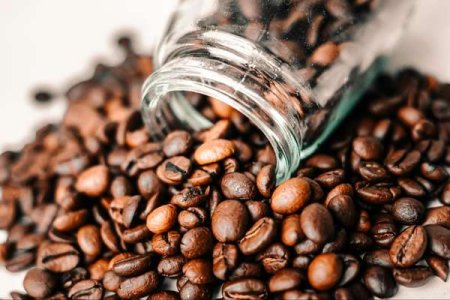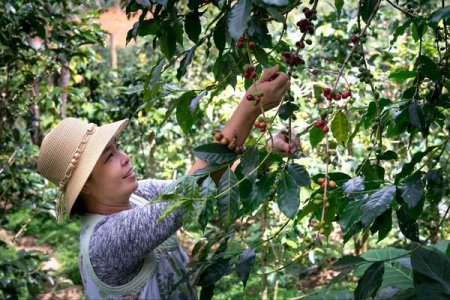Beware Coffee Lovers: Your Daily Cup Could Cost You More! Find Out Why!
For many of us, the day doesn't truly begin until we've savored that first sip of coffee. It's a ritual that energizes, comforts, and for some, it's the cornerstone of morning tranquility.
But brace yourselves, coffee aficionados, because our cherished morning cup is about to demand a bit more from our wallets.
Let's explore the complex brew of reasons behind the rising cost of coffee and what it means for us.
The Bitter Taste of Increased Prices
Nestlé, the global food and beverage titan, has recently stirred the pot with an announcement that will affect coffee lovers everywhere.
Known for popular brands like Nescafé and Nespresso, Nestlé has been grappling with the rising cost of coffee beans.
To combat this, they've decided to implement a price hike and reduce package sizes, as reported by Bloomberg.
This isn't just a minor adjustment. It's a reflection of a larger trend that's impacting the entire coffee industry.
The company's head of coffee brands, David Rennie, revealed during Nestlé's capital markets day that while they are not immune to coffee price fluctuations, they have strategies in place to address them.
A Strategic Shift to Soluble and Capsule Coffees
Nestlé's approach to navigating these turbulent waters includes a pivot towards soluble and capsule coffees.
These products are less affected by the volatile coffee bean market because the cost of the beans represents a smaller slice of their overall price.
By focusing on these offerings, Nestlé aims to provide consumers with more budget-friendly options without compromising on quality.
The company has also introduced new extraction technology, which they claim can squeeze more coffee out of each bean without diminishing the taste.
This innovation could be a game-changer in terms of efficiency and cost-effectiveness.
But what's really causing the price of coffee beans to soar?
The Root of the Issue: Climate Change and Market Dynamics
The answer lies partly in the environmental challenges faced by Brazil and Vietnam, the world's top coffee producers. Climate change has led to severe droughts in these countries, disrupting the supply of coffee beans.
As a result, futures for arabica beans, the variety preferred by chains like Starbucks, have surged by 50 percent this year. Robusta beans, often used in instant coffee, have seen a 65 percent increase.
These environmental factors, combined with market dynamics, are creating a perfect storm that's pushing coffee prices upward. And it's not just Nestlé feeling the heat; the entire industry is in the midst of a caffeine conundrum.
The Broader Impact on Nestlé's Business
It's important to note that Nestlé's portfolio extends far beyond coffee. The company also produces a wide array of products, including pet food, ready meals, bottled water, and frozen pizza.
Despite this diversity, Nestlé has experienced a 2.4 percent drop in sales for the nine months ending in September this year.
Executives have acknowledged that previous price hikes may have pushed consumers away, particularly in the United States, where the perception of high food prices is prevalent.
Inflation, which had fallen to 2.4 percent on an annual basis in September, ticked up to 2.6 percent in October. This, coupled with the Federal Reserve's interest rate cuts, adds another layer of complexity to the economic landscape that companies like Nestlé must navigate.
What Can We Do?
As consumers, we're at the mercy of market forces, but we're not powerless. Here are a few tips to keep enjoying your coffee without breaking the bank:

Have you noticed a change in coffee prices at your local store or café? Are you considering any changes to your coffee routine due to these cost increases? Share your thoughts and tips with our community in the comments below.
But brace yourselves, coffee aficionados, because our cherished morning cup is about to demand a bit more from our wallets.
Let's explore the complex brew of reasons behind the rising cost of coffee and what it means for us.
The Bitter Taste of Increased Prices
Nestlé, the global food and beverage titan, has recently stirred the pot with an announcement that will affect coffee lovers everywhere.
Known for popular brands like Nescafé and Nespresso, Nestlé has been grappling with the rising cost of coffee beans.
To combat this, they've decided to implement a price hike and reduce package sizes, as reported by Bloomberg.
This isn't just a minor adjustment. It's a reflection of a larger trend that's impacting the entire coffee industry.
The company's head of coffee brands, David Rennie, revealed during Nestlé's capital markets day that while they are not immune to coffee price fluctuations, they have strategies in place to address them.
A Strategic Shift to Soluble and Capsule Coffees
Nestlé's approach to navigating these turbulent waters includes a pivot towards soluble and capsule coffees.
These products are less affected by the volatile coffee bean market because the cost of the beans represents a smaller slice of their overall price.
By focusing on these offerings, Nestlé aims to provide consumers with more budget-friendly options without compromising on quality.
The company has also introduced new extraction technology, which they claim can squeeze more coffee out of each bean without diminishing the taste.
This innovation could be a game-changer in terms of efficiency and cost-effectiveness.
But what's really causing the price of coffee beans to soar?
The Root of the Issue: Climate Change and Market Dynamics
The answer lies partly in the environmental challenges faced by Brazil and Vietnam, the world's top coffee producers. Climate change has led to severe droughts in these countries, disrupting the supply of coffee beans.
As a result, futures for arabica beans, the variety preferred by chains like Starbucks, have surged by 50 percent this year. Robusta beans, often used in instant coffee, have seen a 65 percent increase.
These environmental factors, combined with market dynamics, are creating a perfect storm that's pushing coffee prices upward. And it's not just Nestlé feeling the heat; the entire industry is in the midst of a caffeine conundrum.
The Broader Impact on Nestlé's Business
It's important to note that Nestlé's portfolio extends far beyond coffee. The company also produces a wide array of products, including pet food, ready meals, bottled water, and frozen pizza.
Despite this diversity, Nestlé has experienced a 2.4 percent drop in sales for the nine months ending in September this year.
Executives have acknowledged that previous price hikes may have pushed consumers away, particularly in the United States, where the perception of high food prices is prevalent.
Inflation, which had fallen to 2.4 percent on an annual basis in September, ticked up to 2.6 percent in October. This, coupled with the Federal Reserve's interest rate cuts, adds another layer of complexity to the economic landscape that companies like Nestlé must navigate.
What Can We Do?
As consumers, we're at the mercy of market forces, but we're not powerless. Here are a few tips to keep enjoying your coffee without breaking the bank:
- Explore Home Brewing: Invest in a good coffee maker and buy beans in bulk. Home brewing can be more cost-effective and allows you to control the strength and flavor of your coffee.
- Look for Deals: Keep an eye out for sales and discounts on your favorite coffee brands. Consider subscribing to newsletters or loyalty programs that offer exclusive deals.
- Consider Alternatives: If your preferred brand becomes too expensive, be open to trying other brands that may offer a similar taste at a lower price.
- Reduce Waste: Only brew what you'll drink to avoid throwing away precious coffee. If you have leftovers, consider using them for iced coffee or in recipes.
- Support Sustainable Practices: By choosing brands that invest in sustainable farming practices, you can help mitigate the impact of climate change on coffee production.
Key Takeaways
- Nestlé has announced it will increase the prices of its coffee products and offer smaller packs due to the rising cost of coffee beans.
- The company, which owns Nescafé and Nespresso, will focus more on soluble and capsule coffees as these are less impacted by the fluctuations in commodity prices.
- Coffee bean prices have surged due to climate-induced droughts in Brazil and Vietnam, leading to a 50 percent rise in arabica bean futures and a 65 percent rise in robusta bean futures this year.
- Despite its wide range of products, Nestlé has experienced a 2.4 percent drop in sales over the nine months ending September, partly attributed to consumer pushback against previous price increases.
Have you noticed a change in coffee prices at your local store or café? Are you considering any changes to your coffee routine due to these cost increases? Share your thoughts and tips with our community in the comments below.









